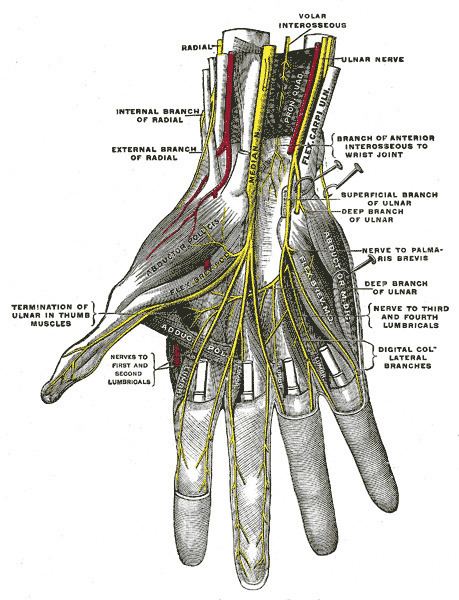Froment's sign is a special test of the wrist. It tests for palsy of the ulnar nerve, specifically, the action of adductor pollicis. Froment sign can also refer to cogwheel effect seen in essential tremor.
To perform the test, a patient is asked to hold an object, usually a flat object such as a piece of paper, between their thumb and index finger (pinch grip). The examiner then attempts to pull the object out of the subject's hands.
A normal individual will be able to maintain a hold on the object without difficulty.
However, with ulnar nerve palsy, the patient will experience difficulty maintaining a hold and will compensate by flexing the FPL (flexor pollicis longus) of the thumb to maintain grip pressure causing a pinching effect.
Clinically, this compensation manifests as flexion of the IP joint of the thumb (rather than adduction, as would occur with correct use of the adductor pollicis).
The compensation of the affected hand results in a weak pinch grip with the tips of the thumb and index finger, therefore, with the thumb in obvious flexion.
Note that the FPL is normally innervated by the anterior interosseous branch of the median nerve.
Anterior interosseous branch comes off more proximally than the wrist, in evaluating lacerations near the wrist.
Simultaneous hyperextension of the thumb MCP joint is indicative of ulnar nerve compromise. This is also known as Jeanne's Sign.
It is named for Jules Froment.

